
Domes are the fastest, most cost-effective way of creating a full-size indoor sports arena. That said, designing and installing a dome is a complex process that, much like any real-estate development project, requires permitting, custom design, concrete foundations, electrical work, landscaping and additional, use-specific additions like turf or hardcourts.
While The Farley Group provides everything you need for the dome portion of the project (full installation of structure, fabric membrane, HVAC, lighting, doors, etc.), third-party general contractors are required to prepare the site for dome installation. Site preparation is required for all dome projects, regardless of the dome supplier. Even for a relatively small project—like a 120’ x 200’ four-court tennis dome—the dome portion of the project can cost over $700K, but the true project cost is significantly higher.
Some dome suppliers just gloss over the true cost of building a dome. The Farley Group believes in being fully transparent, ensuring that prospective clients understand, from the start, not only the benefits of owning and operating a dome, but also the true investment required.
| Cost of Dome Package | The Farley Group | $26 per square foot | $624,000 |
| Cost of Site Preparation | Third Party General Contractor | $28 per square foot | $672,000 |
| Total Project Costs | (Typically a 4 month completion time) | $54 per square foot | $1,296,000 |
By partnering with The Farley Group, you can build your dome with confidence— starting with a true understanding of the full complexity and cost of the project.
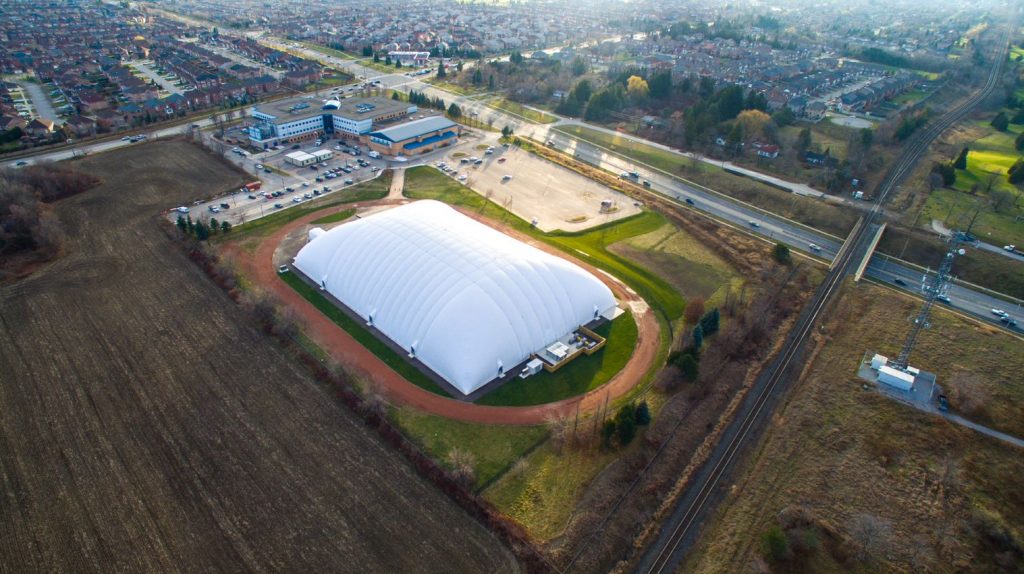
Compared to traditional construction, building a dome is fast and affordable. That said, domes are a unique structure that require specialized skills and experience to fabricate, construct, operate and maintain.
For new dome buyers, the complexity and uncertainty surrounding dome construction and operation can be overwhelming. The Farley Group works with new buyers to ensure the process, and all associated costs, are fully understood from the start. We partner with dome owners to smoothly guide them through the planning, designing and building of a dome, as well as its longterm operation and maintenance.
All projects consist of the following four development phases: project design, site construction, dome installation and peripheral projects.
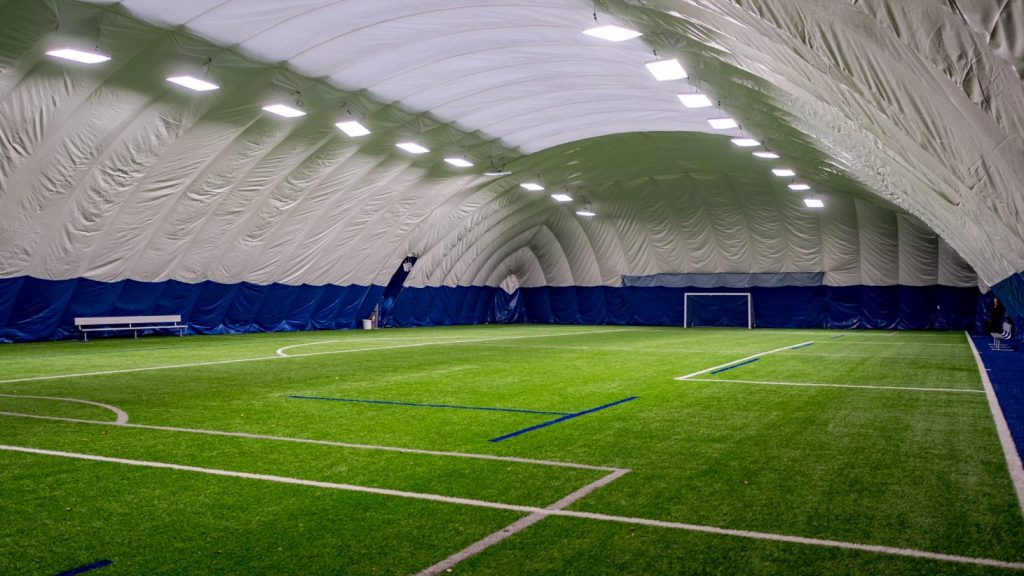
Like traditional construction, building a dome requires significant planning. This process starts by understanding the needs of the client: how the dome will be used, the physical conditions the dome will face, and the client’s financial expectations for investment and return. Farley custom designs each dome accordingly and ensures absolute clarity in dome design and project requirements.
Given the complex site preparation, building codes and other requirements, building a dome requires a team of professionals. In addition to Farley, who provides the dome product and building expertise, projects always require a general contractor. Architects and other consultants are also often part of the team, responsible for peripheral projects such as adjacent buildings that include reception, admin offices, and locker rooms; parking lots; and landscaping.
On average, the project design process usually takes several months to complete. Once in place, the project’s consultants or general contractor can begin applying for the necessary approvals and permitting to start building. This process involves local government entities and can take as long as 12 months to complete before ground is broken.
Farley has spearheaded hundreds of dome projects and can help you build and guide your team.
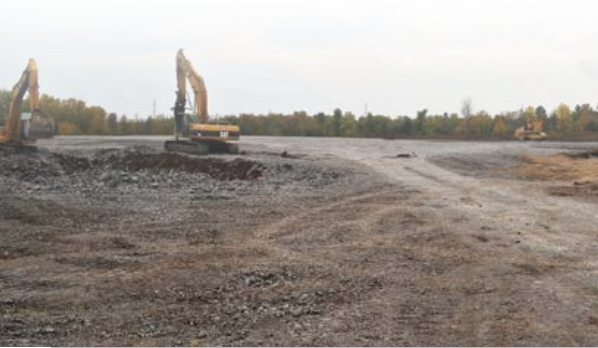
Once approvals and permitting are secured, the general contractor can begin the construction process. Though it must comply with Farley’s design for the dome, the general contractor is responsible for construction work necessary in preparing the site for the installation of the dome. A concrete foundation, called a grade beam, will be designed to the exact dimensions of the dome and will be constructed on site. The grade beam will hold the inflated dome to the ground, ensuring its safety regardless of the weather conditions.
Site construction also requires electrical and gas utility connection and distribution to the dome’s inflation, HVAC and lighting systems. Delays with utility services being commissioned are not uncommon, so allowing for ample time in the construction schedule is highly recommended.
Other site improvements, including parking, stormwater management, construction of the entry building (if applicable), and preparation of the sub-base for the interior surface of the dome will also be completed during this phase of the project.
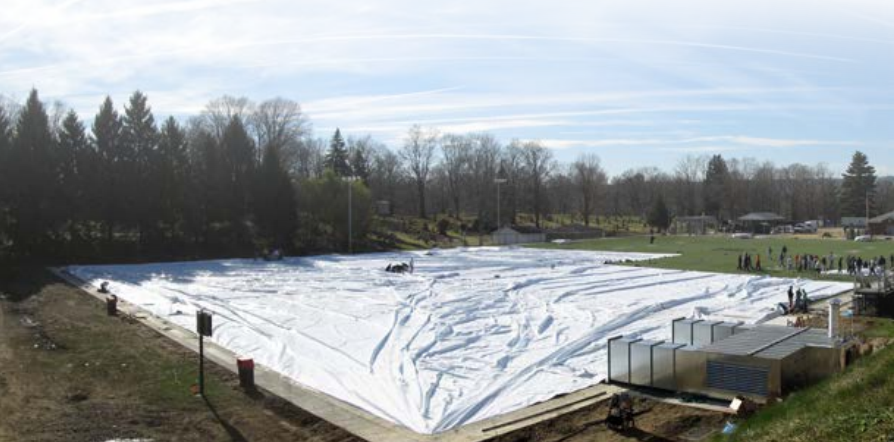
Once the site is fully prepared, Farley’s team will be on-site to erect the dome. The dome fabric will arrive in large rolled bundles that are shipped directly to the site with all other parts of the dome package required for inflation. Farley’s team will roll-out and anchor the fabric to the concrete foundation (the grade beam). The different segments of fabric are connected to each other at the seams.
HVAC and other utilities will be connected, and Farley will then inflate and insulate the dome. Unlike competitors, we use actual insulation material to ensure maximum energy efficiency—and lowest energy cost—in all our domes.
Finally, dome components—including internal walkways and dividers, pedestrian airlocks and revolving doors, vehicle airlocks, emergency exits and interior lighting systems—will be installed in the dome. With all component connections complete, the dome is ready for inspection and use.
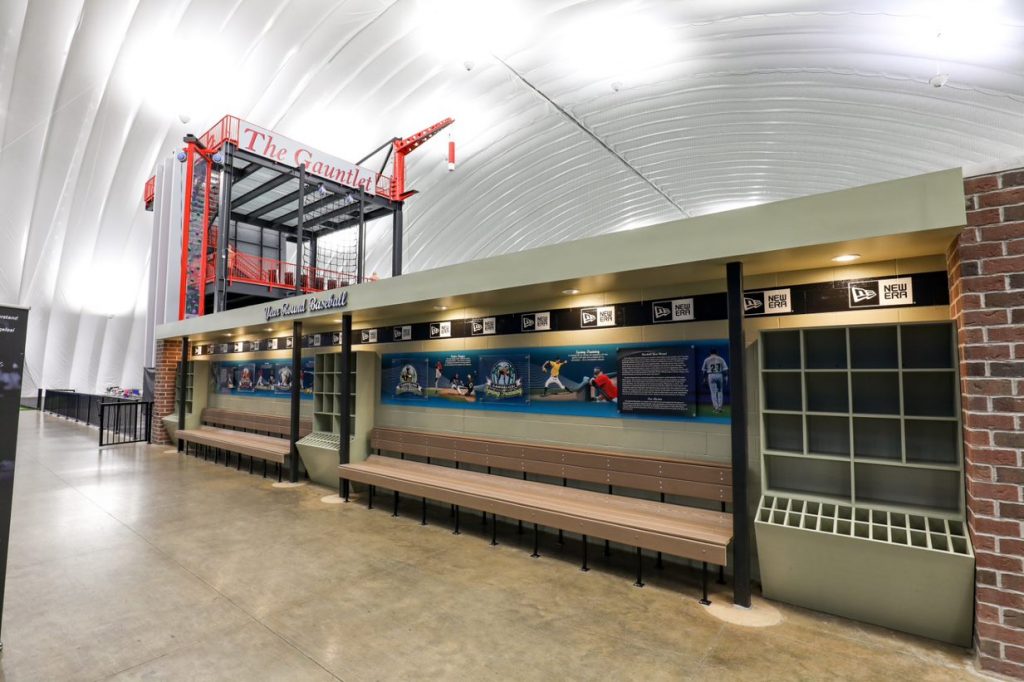
Once the dome package is installed and operating, the client is free to modify the inside turf and outside grounds of the dome. Because peripheral projects vary widely from client to client, these projects are not included in the project bid. Turfs are custom designed for sport and level of play. Turf designs must be finalized prior to the final draft of the dome to ensure seamless integration of these two critical elements.
Additional structures for reception, locker rooms and offices can be designed and completed by the general contractor, and in most cases are connected directly to the dome. The general contractor is also responsible for parking lots, parking lot lighting and overall landscaping as needed.
Dome development projects can be complicated, but Farley is accustomed to working closely with general contractors and other consultants to ensure the project—from planning to play—is completed smoothly, on-time, and on budget.

Ralph Farley, our founder and Chairman, has been building domes since 1969. Farley has grown to become the leading provider of dome construction and service in North America year after year. The Farley Group is known for the industry’s highest quality domes and unmatched professional service at competitive prices.
As all our domes are custom designed, dome pricing can vary considerably from project to project. The rare super-industrial or military project can result in dome pricing as low as $10 per square foot, due primarily to economies of scale. Realistically, however, the overwhelming majority of domes— built by Farley or others—cost between $26 to $28 per square foot for the dome package itself.
All of Farley’s domes are custom designed to the unique needs of each client.
However, as described previously, the dome package is only one part of the overall dome project. On average the work done by general contractors adds approximately $28 per square foot to the project, not including peripheral projects. Additional consultants or specialists, hired directly by the client, can also add to the final price of the project.
The examples on the following pages give a basic understanding of what different types of domes cost to build.
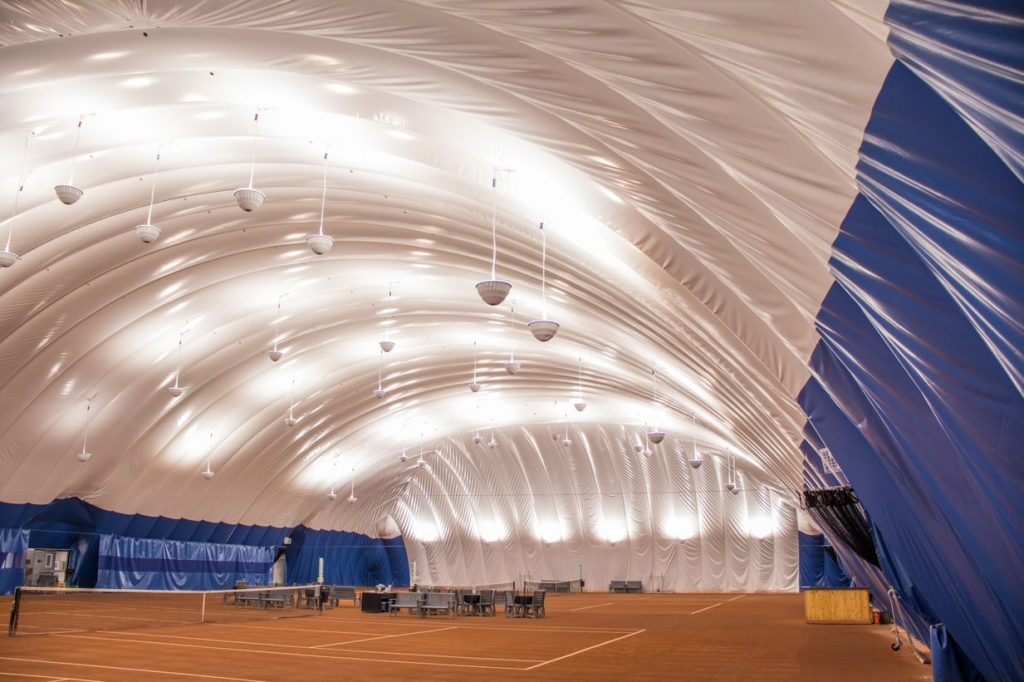
For smaller projects—like a 4-court tennis dome—clients typically invest approximately $700K on a turnkey Farley dome, including all necessary components such as HVAC, lighting, airlocks and insulation. Additional costs for planning, site preparation and peripheral projects—like landscaping and custom courts— increase total project costs to over $1M.
The tennis dome at The Westin’s Bear Mountain Resort Community in Victoria, British Columbia is an example of a smaller sized Farley project. Completed in 2018, the custom black dome covers 4 red clay courts during winter months. It is a world-class dome for a world-class resort community.
This spacious dome was custom designed for professional-level play in high-end comfort. The dome features extra space around the back and sides of courts for runbacks during play and socializing between games. The 40 foot span from ground to ceiling and custom Luxor LED lighting system provides a bright, open space for residents to get together for tennis.
Remote monitoring, automated controls, and a suite of environmental sensors enables Bear Mountain operators to ensure safety and consistent comfort within the dome even during unpredictable winter storm conditions.
Example Small Dome: 4 Tennis Courts – 120’ x 200’ (24,000 square feet)
| Cost of Dome Package | The Farley Group | $26 per square foot | $624,000 |
| Cost of Site Preparation | Third Party General Contractor | $28 per square foot | $672,000 |
| Total Project Costs | (Typically a 4 month completion time) | $54 per square foot | $1,296,000 |
Note: all costs approximate
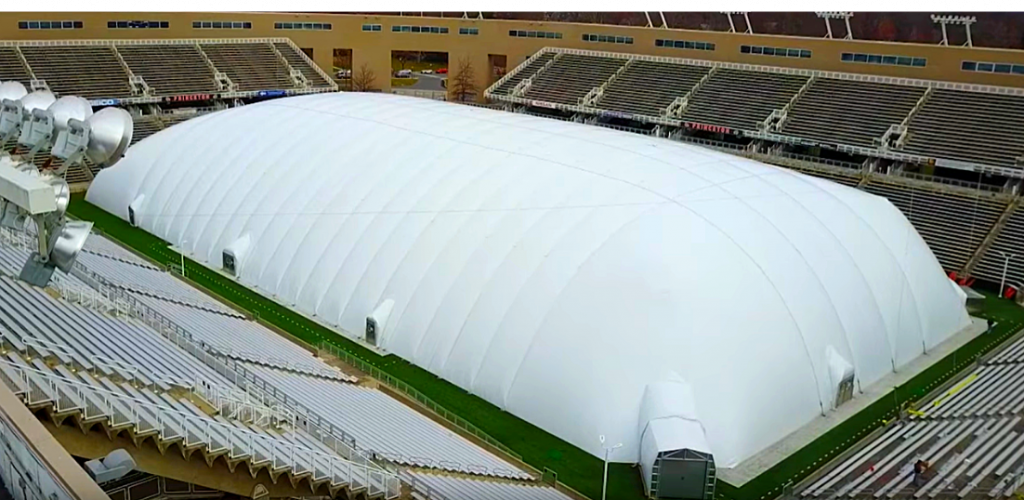
For medium-sized projects – like the Farley dome covering Powers Field at Princeton University – clients can expect to invest approximately $1M on a turnkey Farley dome, including all necessary components such as HVAC, lighting, airlocks and insulation. However, as shown in the chart below, associated planning, utility and construction can increase the total project cost (including the dome) to approximately $2M. From planning to play, a dome of this size requires about 5 months to complete. Replacement domes like the Farley dome covering Harvard University’s field require both less financial investment and time to complete.
Completed in 2018, this seasonal dome covering Princeton’s Powers Field provides a climate controlled, full-field space for year-round training and conditioning of varsity athletes. The dome is also used for intramural sports, club activities and community events, giving the entire student body a warm, bright and safe space for recreation despite New Jersey’s dark winters. The dome visibly illustrates Princeton’s dedication to the health and wellbeing of its entire student body and, accordingly, has been an effective recruiting tool both for elite athletes and the general student body.
Safety is always Farley’s top priority. Given our over 50 years of experience designing domes, we understand where you can—and cannot—be innovative. As our competitors are quick to note, we are uncompromising when it comes to the structural integrity of our domes. Farley happily passes on projects where the boundaries of safety are being pushed for the sake of “innovation”, cost, or for extra feet of play.
Unlike most of our competitors, we use steel construction in all of our airlocks to withstand wind and other storm conditions, we insist on life-safety certified generators in case of emergency, and we provide state-of-the-art controls—including a suite of sensors for snow, wind, temperature and pressure—that can be remotely monitored and automatically adjusted to meet storm conditions.
If it is a Farley dome, rest assured it’s built right.
Example Medium-Sized Dome: Multi-Sport – 200’ x 300’ (60,000 square feet)
| Cost of Dome Package | The Farley Group | $26 per square foot | $1,560,000 |
| Cost of Site Preparation | Third Party General Contractor | $28 per square foot | $1,680,000 |
| Total Project Costs | (Typically a 4 month completion time) | $54 per square foot | $3,240,000 |
Note: all costs approximate
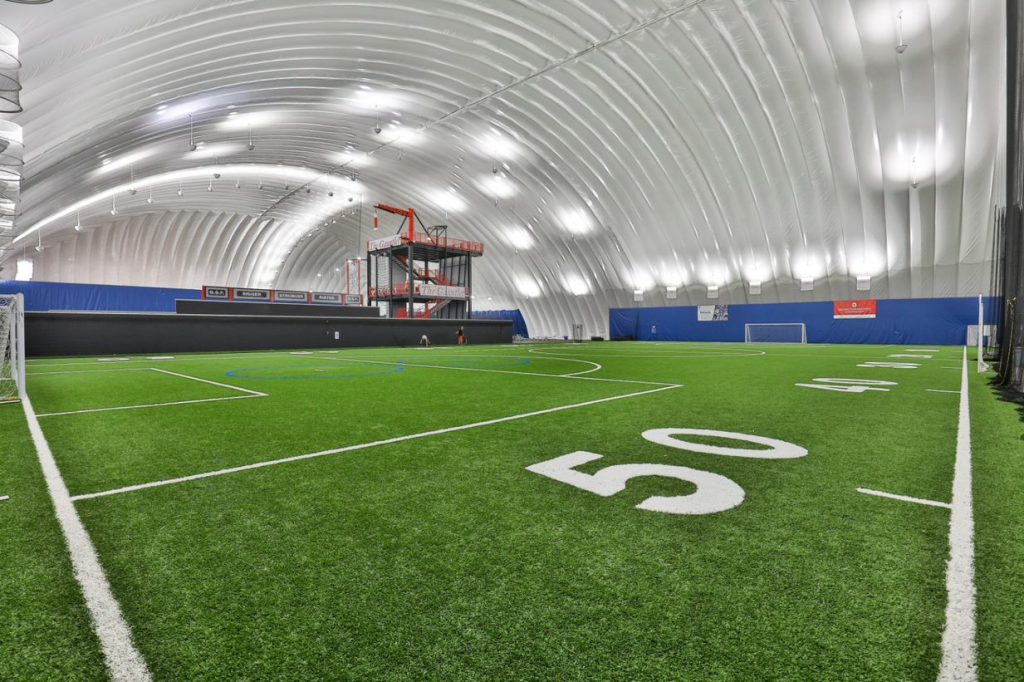
For a large, multi-sport dome —like Bo Jackson’s Elite Sports—a client can expect to invest approximately $1.8 million on a turnkey Farley dome, including all necessary components such as HVAC, lighting, airlocks and insulation. However, as shown in the chart below, associated planning, utility and construction can increase the total project cost (including the dome) to approximately $3.6M. For the dome itself, from planning to play, a large dome can take at least 6 months to complete.
Large sized domes are often built by entrepreneurs for multi-sport, for-profit use. Bo Jackson sports is a leading provider of elite sports training. Their dome shown below, is one of the most advanced domes built in North America. In fact, all of Bo Jackson’s Elite Sports training facilities are domes built by The Farley Group.
For entrepreneurs developing for-profit domes, operating costs are a deciding factor when choosing a dome supplier. Through its design, The Farley Group has effectively reduced the cost of dome operation. By insulating their domes with physical insulation material between the fabric, Farley’s dome achieves a thermal value of R-10.
This maintains a warmer, more consistent climate within the dome and reduces energy costs. This level of thermal value —and energy efficiency—is simply not achievable by layering fabric material. Moreover, additional layered material—often referred to as “walls”, increases the weight of the dome considerably, which increases safety risks. Added weight also makes seasonal installation of domes more difficult.
Example Large Dome: Full-Sized Dome – 250’ x 400’ (100,000 square feet)
| Cost of Dome Package | The Farley Group | $26 per square foot | $2,800,000 |
| Cost of Site Preparation | Third Party General Contractor | $28 per square foot | $2,800,000 |
| Total Project Costs | (Typically a 4 month completion time) | $54 per square foot | $5,500,000 |
Note: all costs approximate
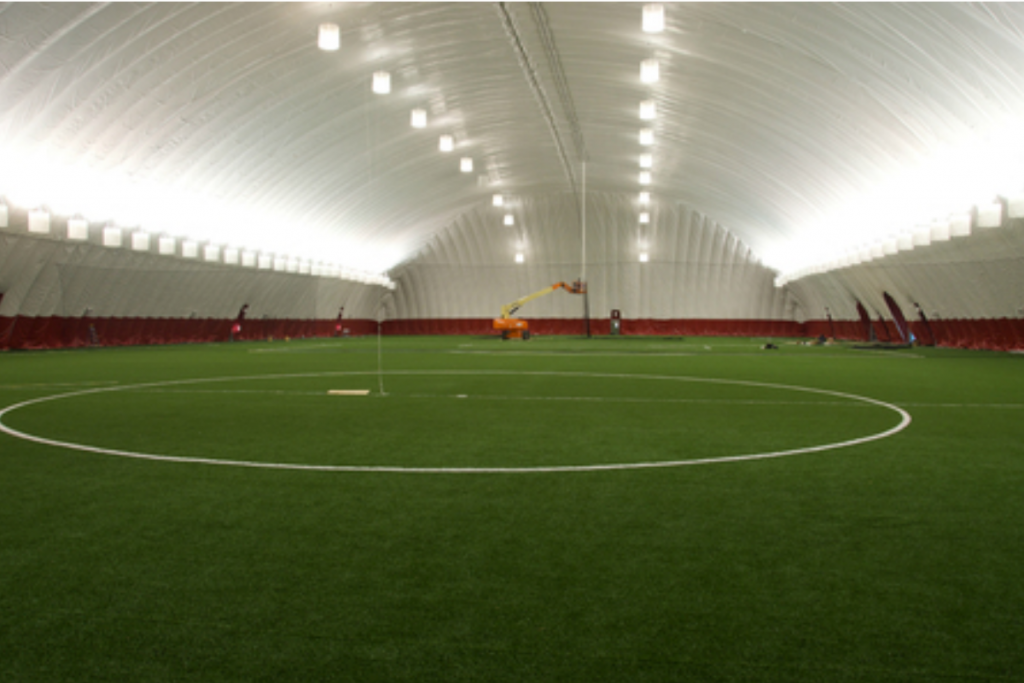
For professional sports teams—like Major League Soccer Team Chicago Fire—domes are a critical part of year-round training. Professional teams can expect to invest approximately $1.6M for the dome package, and approximately $3.2M for the entire dome project.
The Fire Pitch, one of the best examples of a sports dome in North America, is owned and operated by the Chicago Fire. Between December and April, the Chicago Fire erects a dome over their field, transforming it into a brightly lit, temperature controlled indoor facility. It features six turf fields including a smaller field perfect for small sided games, goal keeper training, as well as bleachers and refreshments for family and fans. Particularly given the Windy City’s brutal winters, the Chicago Fire chose Farley because our domes are specifically designed to withstand extreme weather outside while providing best-in-class comfort for professional athletes inside.
Ralph Farley started designing and building sports domes in 1969 to withstand snowy Canadian winters. The dome’s ability to shed snow is at the very core of Farley’s design. Competing domes emphasizing the ability to load snow, instead of shedding it, are making the best of fundamentally bad designs. In fact, heavy cross cabling—a “quilted” netting pattern —will often trap snow, resulting in heavy ice patches. This extra weight requires an increased emphasis on snow load in order to ensure the safety of players. For Farley, this safety consideration is built into its initial design.
Additionally, Farley’s use of physical insulation between its inner and outer fabric layers—which achieves a thermal value of R-10—is lighter and more energy efficient, helping ensure both the safety and comfort of players while simultaneously reducing operating costs.
Example Large Dome: Full-Sized Dome – 250’ x 400’ (100,000 square feet)
| Cost of Dome Package | The Farley Group | $26 per square foot | $2,600,000 |
| Cost of Site Preparation | Third Party General Contractor | $28 per square foot | $2,800,000 |
| Total Project Costs | (Typically a 4 month completion time) | $54 per square foot | $5,400,000 |
Note: all costs approximate
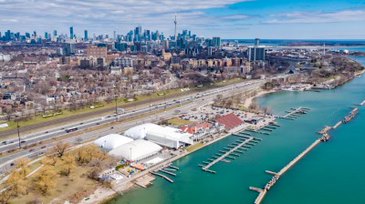
The Farley Group partners with dome owners, guiding them smoothly through the planning, bidding, and construction of a dome, as well as the operation and maintenance of domes. Particularly as a first-time buyer, understanding the complexities and uncertainties of operating a dome is essential, which is why long-term service should be a critical factor in choosing a dome supplier. Clients take comfort in having The Farley Group as a trusted, responsive and dependable part of their operations team. As an operator, you need a trusted partner to be there for you to answer everyday questions, recommend best practices, walk through solutions to pop-up problems or respond immediately in the event of an emergency.
Farley is the ONLY dome supplier with a dedicated service team. We have over 20 dedicated, highly specialized dome technicians trained in a broad range of dome-specific skills including construction, seasonal maintenance, fabric care, automated control electronics, and HVAC mechanisms.
Because of its dedication to its long-term service partnerships, The Farley Group has NEVER lost a service client. In fact, Farley’s growth in recent years is due, in part, to converting service clients that originally started with competing dome brands to Farley constructed domes for replacements and additional builds. This is because industry veterans understand the critical importance of a longterm service relationship to the proper operation of a dome to meet or exceed the dome’s expected lifespan to maximize their return on investment.
Who you work with matters. When choosing a dome partner, clients should ask themselves: who will be there for me now, next year, and over the next two decades? If you’re part of The Farley Group family, don’t worry – we’ve got you covered, from designing to building to operating your dome.
Farley provides 24/7 responsiveness for any issue at any time, day or night.
Since 1969, Ralph Farley has set the industry standard for dome quality and after-market service. We at The Farley Group believe that— given the financial investment and operational complexity of building an air-supported structure—who you choose to work with matters. The Farley Group’s expertise, experience and professionalism are unparalleled in the industry. Year over year, we are North America’s leading provider of dome construction and aftermarket service.
Alternatively, research at your own pace in our digital content library, and when you’re ready, reach out to us to discuss how to make your unique dome vision a reality. From design to operation to replacement, when you’re part of the Farley family, we’ve got you covered.
If you’re ready to start building your dome, give us a call, and we’ll walk you through The Farley Group Difference.